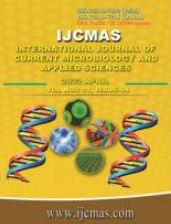


 National Academy of Agricultural Sciences (NAAS)
National Academy of Agricultural Sciences (NAAS)

|
PRINT ISSN : 2319-7692
Online ISSN : 2319-7706 Issues : 12 per year Publisher : Excellent Publishers Email : editorijcmas@gmail.com / submit@ijcmas.com Editor-in-chief: Dr.M.Prakash Index Copernicus ICV 2018: 95.39 NAAS RATING 2020: 5.38 |
There is a global crisis of antibiotic resistance, which is among the world's most serious health problems. Antibiotic growth promoters (AGPs) have been implicated in the development of antimicrobial resistance (AMR) in bacteria that cause common infections over the past 70 years due to their use in animal agriculture. The use of phage therapy is a promising approach for combating bacterial infections and encouraging healthy poultry growth.In addition to being an excellent vehicle for foodborne pathogens, poultry and poultry meat usually contain millions of bacteria, particularly Campylobacter and Salmonella. There are multiple current strategies for phage therapy, including phage cocktails, enzymes derived from phages, phages combined with antibiotics, phage engineering, the combination of phages and clustered regularly interspaced short palindromic repeats (CRISPR-Cas). Poultry phages are used for phage therapy, phage biocontrol, and phage biosanitization. As foodborne pathogens increase, biocontrol has the potential to become the most effective way to reduce them in animals as well as in processed foods. Phage biocontrol may decrease the use of antibiotics in poultry production, thus paving the way for the use of an essential part of our health care system that has been forgotten.
 |
 |
 |
 |
 |